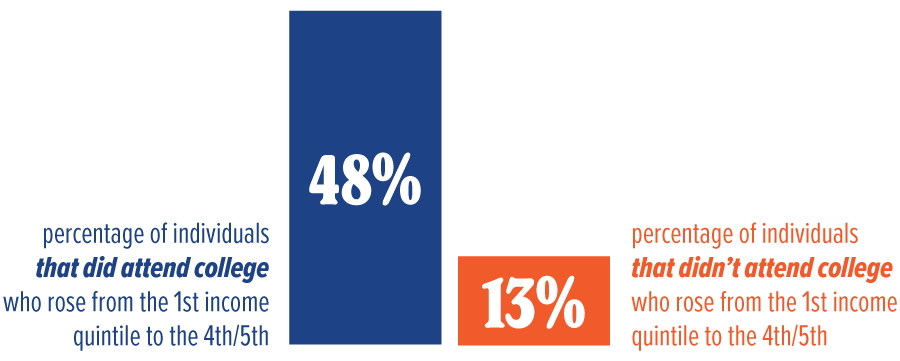Improving Social Mobility
The Social Mobility metric tracks students’ movement between income distributions over time, relative to their parents’ household income. Meeting this target would result in an additional 1.5 million graduates.

Social Mobility
The Social Mobility metric is designed to capture public higher education systems’ contributions to social mobility of degree-seeking undergraduate students. The metric tracks students’ movement between income distributions over time, relative to their parents’ household income. Meeting this target in conjunction with the others would result in an additional 1.5 million graduates who would improve their prosperity trajectory.
Baseline:
NASH members have advanced 71% of students from families in the bottom 40% of the income distribution to the top 60% of the income distribution. In addition, among students who attended college on a traditional timeline (aged 19-22), 48% from the 1st income quintile rose to either the 4th (24%) or 5th (24%) quintile compared to only 13% of individuals who did not attend college. This means that individuals were over 3.5 times more likely to rise out of the 1st income quintile if they attended college than if they hadn’t.

Targets:
By 2040 we propose that NASH member systems will advance 85% of students from families in the bottom 40% of the income distribution to the top 60% of the income distribution, and 65% of students in the bottom 40% to the top 40%.
To chart interim progress toward the 2040 goal, by 2030 the median income of students in the bottom tercile 8 years after enrollment will exceed the national median.
